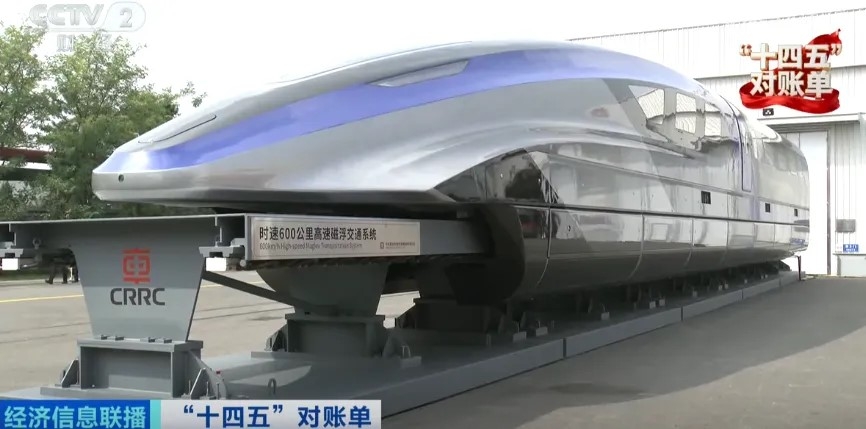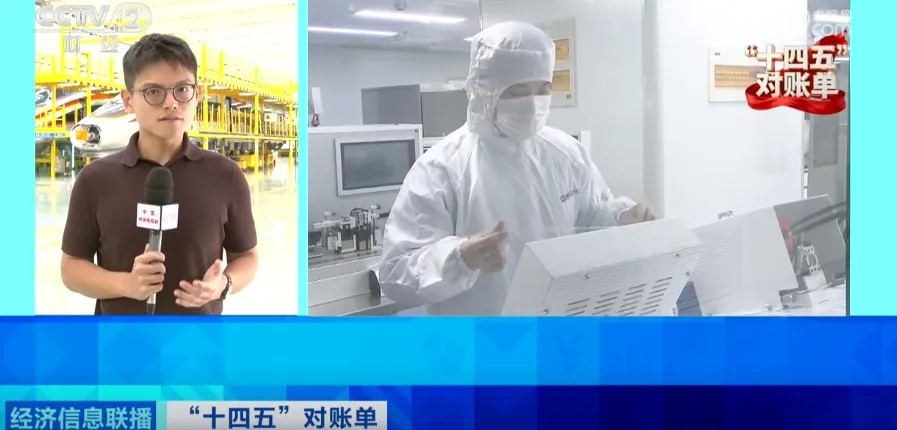This year marks the final year of China’s 14th Five-Year Plan. The 2024 Government Work Report calls for completing the plan’s goals with high quality and laying a solid foundation for a strong start to the 15th Five-Year Plan.
The CCTV Finance Channel recently launched a special series titled “14th Five-Year Plan Scorecard,” reviewing progress against planned targets and presenting the achievements and real-world outcomes of the past five years. The first episode spotlighted CRRC, focusing on technological innovation in rail transit to show how science and technology have shaped China’s development during this period.
Innovation-Driven Growth: Setting New Benchmarks for China’s Intelligent Rail Manufacturing
China’s high-speed rail has long been a powerful example of innovation-driven development. By the end of the 14th Five-Year Plan period, China’s high-speed rail network had reached 48,000 kilometers, with more than ten million passengers traveling by high-speed rail every day. Over the past five years, China’s rail equipment has continued to push boundaries—faster, stronger, and smarter.
CCTV reporter Su Tong :“According to the design, this 600 km/h high-speed maglev train can accelerate from zero to 600 km/h in just three and a half minutes—essentially achieving ‘near-ground flight.’”

Ding Sansan, Deputy Chief Engineer at CRRC Qingdao Sifang, added:“After rounds of testing and verification, this engineering prototype is now essentially mature.”
Achieving safe and reliable operation at 600 km/h requires far more than simply doubling the speed of a 300 km/h train. It demands integrated breakthroughs in materials, propulsion, structural design, and systems engineering—each step requiring rigorous testing and certification.
Since the high-speed maglev project was included in China’s national key R&D program in 2016, the first test prototype rolled off the production line in 2019. After several rounds of technical iteration during the 14th Five-Year Plan period, Ding noted that China has now basically achieved full independent R&D capability for high-speed maglev systems. Beyond creating the world’s fastest land-based transportation vehicle, the project also drives upgrades across high-end equipment manufacturing and strategic emerging industries.
CCTV reporter Su Tong then shifted to another highlight:“If that was the fastest, this is the strongest. Behind me is the world’s most powerful permanent-magnet direct-drive heavy-haul locomotive, delivering up to 10,400 kW of power—equivalent to more than 100 passenger cars accelerating at the same time. It can haul over 10,000 tons of coal on its own. After completing comprehensive system testing in September, it is now being prepared for delivery to the West-to-East Coal Transport Corridor to support energy supply.”
Wang Jincheng, Electrical Engineer at CRRC Zhuzhou Locomotive, explained:“Achieving the world’s highest power output starts with using permanent-magnet motors—smaller in size, lighter in weight, and higher in power density. New components such as silicon carbide also significantly improve energy efficiency.”

CCTV reporter Su Tong concluded:“Seeing how China has developed trains that run faster and pull harder over the past five years, it’s clear that innovation is driving China forward at high speed.”
Behind these achievements is sustained investment in science and technology. China’s total R&D expenditure exceeded RMB 3.6 trillion last year—nearly 1.5 times the amount in 2020. Science and technology innovation is increasingly integrated with industrial development, fueling the growth of new-quality productive forces.
Every individual in China is also a beneficiary of this innovation-driven momentum. Domestically developed crop varieties now dominate the market, strengthening food security; China is bringing more innovative drugs and high-end medical devices to market at a faster pace; advances in environmental protection, public safety, transportation, culture and tourism, and sports are improving daily life across the country. The impact of technological progress can be felt in daily life—not just as advancement, but as a growing sense of well-being.
Looking ahead to the next five years, China is expected to accelerate its progress toward building a world-class science and technology powerhouse. With a clear goal of strengthening scientific and technological self-reliance, China is poised to achieve even greater momentum.
China is poised to keep moving forward with steady momentum in the years to come.